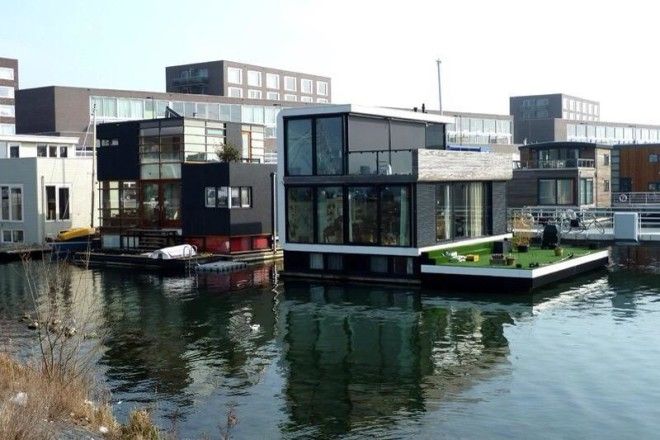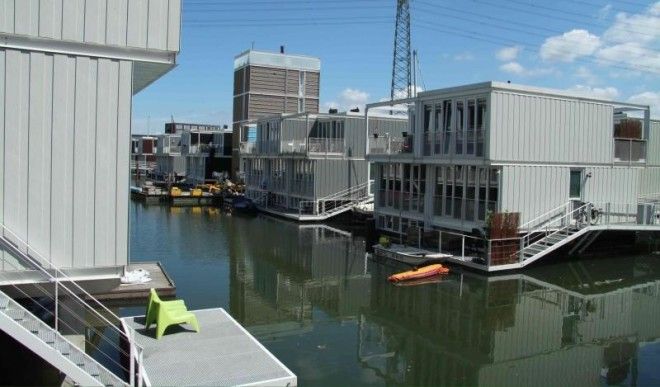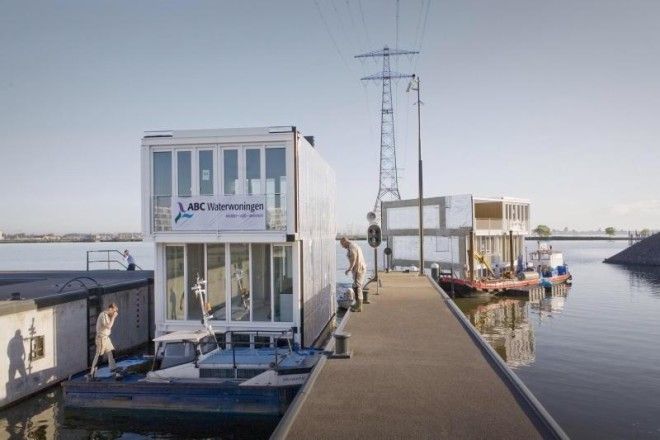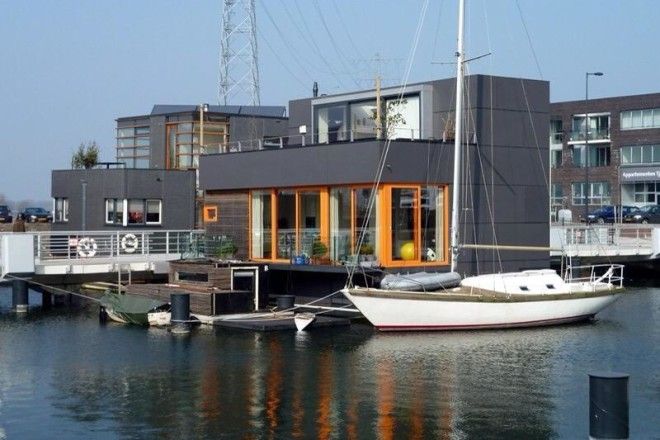
House boats are a common sight in Amsterdam, and there are even floating businesses, such as restaurants. Until the IJburg project came along, no one had proposed or built a floating community. Holland, and especially Amsterdam, is densely populated. That consideration, in concert with strict building regulations, made moving on to the water not only a pragmatic decision, but a desirable one. Doing so has allowed architects to design and build dwellings that rival anything on dry land. The IJburg district has been specifically designed as a floating community, with homes on the water, in the water, and above it, on dykes, pylons, and the like. The municipal government has classified these floating dwellings as they do land-based homes, so financing is not inordinately difficult for new owners to obtain.

In 2011, Architectenbureau Marlies Rohmer was tapped for the primary project of 75 homes, and assembled a team well experienced in the fundamentals of water borne building. The design style is modern, with clean lines that blend well with ocean and city, while providing enviable comfort and views. Dykes and jetties replace roads and sidewalks. There is, naturally, lots of glass, which drives home the unique environment. The size and features employed are similar to what land dwellers enjoy in Amsterdam, so IJburg owners don’t sacrifice much of anything for their choice of home.

Living on the water is a sensible choice for the Netherlands, the ‘low country’. With global warming and rising sea levels an unavoidable reality, managing the sea becomes an ever greater concern. Living and working on the water effectively allows multiple uses for the same area – a neighborhood may double as catchment for precipitation or storm surge. Additionally, developing waterfront areas for residential is a solid solution to dock and quay land that has become obsolete by ongoing changes in industry and economy. With land so intensively developed and occupied, it only makes sense to look to the sea. Much of Holland’s lowest lands have been reclaimed or artificially created, but that process is complex and expensive. Reclamation carries issues beyond construction cost – there are environmental concerns that eclipse viability in many areas. As such, building on the water is a cheaper, faster, more practical option.

The end result is a community that promotes the use and enjoyment of theelement that has largely defined the Netherlands. Living on, as opposed to merely next to the sea, cements an age old symbiosis.

